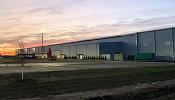President
- FMA
- The Fabricator
- FABTECH
- Canadian Metalworking
Categories
- Additive Manufacturing
- Aluminum Welding
- Arc Welding
- Assembly and Joining
- Automation and Robotics
- Bending and Forming
- Consumables
- Cutting and Weld Prep
- Electric Vehicles
- En Español
- Finishing
- Hydroforming
- Laser Cutting
- Laser Welding
- Machining
- Manufacturing Software
- Materials Handling
- Metals/Materials
- Oxyfuel Cutting
- Plasma Cutting
- Power Tools
- Punching and Other Holemaking
- Roll Forming
- Safety
- Sawing
- Shearing
- Shop Management
- Testing and Measuring
- Tube and Pipe Fabrication
- Tube and Pipe Production
- Waterjet Cutting
Industry Directory
Webcasts
Podcasts
FAB 40
Advertise
Subscribe
Account Login
Search
Develop your core strength
Knowledge gives data its meaning
- By Bill Frahm
- September 10, 2018
- Article
- Shop Management
“Fortune favors the prepared mind” - Louis Pasteur
Investigative reporters start with a topic and dig deep to discover facts that reveal who, what, and why. Knowing the facts and truth of a situation helps readers make better decisions about the things and events that influence their lives. Doing your own version of investigative reporting about formability, sheet metal properties, and technology also can lead you to make better decisions.
Sheet metal forming has many traditions and much wisdom passed down through generations of experience. These traditions served well when “steel was steel.” In recent decades, steel has undergone changes that have challenged old standards for forming.
Aluminum continues to show up in more consumer products. Did you know that, as recently as the nineteenth century, aluminum was considered more precious than gold? Napoleon III, Emperor of France from 1853 to 1870, used aluminum place settings to serve honored guests. Improvements in extracting aluminum from bauxite made the mineral more affordable. Depression-era needs to provide electricity throughout the country made aluminum’s superior conductivity attractive. Aluminum then found its way into aerospace and military applications. Today, we see aluminum in beverage cans, automobiles, household appliances, and foils.
The type of alloy and how it’s manufactured determine a material’s physical characteristics. These characteristics define the metal’s capabilities and behaviors during forming. The metal’s microstructure is a key determinant of how it will perform. If you understand these fundamentals, you can
- Improve the probability of meeting the formed components requirements efficiently.
- Adapt to the evolving environment of new materials and material grades.
- Translate raw data about your materials and operations into something meaningful.
In this age of “big data” and nearly unlimited computing capacity, business owners often are misled into complacency about the need for knowledge. People frequently fall into the trap of believing that data reveals all of the necessary information about business activities. Computer science students learn the data-information-knowledge-wisdom (DIKW) model as the frame of reference for how to manage information and knowledge. This model, a hierarchy focused on assuming that knowledge comes from organizing raw data into information, is represented as shown in Figure 1.
This is, however, a misguided attempt to offer computer science students a meaningful reference. The DIKW model implies that knowledge is a subset of information and data. In fact, knowledge is the core that gives data its meaning. Also, information is an ambiguous and imprecisely defined term. Wisdom is more of a social term that used here seems to be simply about topping off the pyramid.
In previous articles, I have mentioned the bad decisions employees make because raw data is meaningless without context and knowledge. In fact, a meaningful study of data can be made only by knowledgeable individuals. Knowledge itself results from experiences and observations. It is a messy and disorganized process. It also is the foundation for all of our progress and success. In manufacturing, the use and enhancement of knowledge looks something like the diagram in Figure 2.
The conclusion of this model is that knowledge is the core that defines the success of research and activities. The more you understand forming technologies, forming manufacturing processes, and the effect of material properties on forming behavior, the greater the quality of your data studies and production tests. As the quality of your activities improves, your gains in meaningful knowledge also improve. This model demonstrates the cycle of knowledge and experimentation.
As your core improves, you also become less susceptible to the influence of dated traditions and “rules of thumb.” Your belief system begins to evolve based on evidence rather than anecdotes. Results should improve and customers will like what they see. As a supply chain member, you now can lead the discussion rather than repeating what customers and suppliers want to hear.
The number of available sheet metals and forming technologies continues to grow at an unprecedented pace. Those who are willing to study, learn, and challenge convention will be tomorrow’s leaders.
About the Author

Bill Frahm
P.O. Box 71191
Rochester Hills, MI 48307
248-506-5873
subscribe now

The Fabricator is North America's leading magazine for the metal forming and fabricating industry. The magazine delivers the news, technical articles, and case histories that enable fabricators to do their jobs more efficiently. The Fabricator has served the industry since 1970.
start your free subscription- Stay connected from anywhere

Easily access valuable industry resources now with full access to the digital edition of The Fabricator.

Easily access valuable industry resources now with full access to the digital edition of The Welder.

Easily access valuable industry resources now with full access to the digital edition of The Tube and Pipe Journal.
- Podcasting
- Podcast:
- The Fabricator Podcast
- Published:
- 05/07/2024
- Running Time:
- 67:38
Patrick Brunken, VP of Addison Machine Engineering, joins The Fabricator Podcast to talk about the tube and pipe...
- Trending Articles
White House considers China tariff increases on materials

A deep dive into a bleeding-edge automation strategy in metal fabrication

A visit to Automate 2024 reveals the future might be now

Majestic Steel Arkansas fully operational

Rivian to expand Illinois facility to manufacture midsized SUV

- Industry Events
Laser Welding Certificate Course
- May 7 - August 6, 2024
- Farmington Hills, IL
World-Class Roll Forming Workshop
- June 5 - 6, 2024
- Louisville, KY
Advanced Laser Application Workshop
- June 25 - 27, 2024
- Novi, MI
Precision Press Brake Certificate Course
- July 31 - August 1, 2024
- Elgin,




























